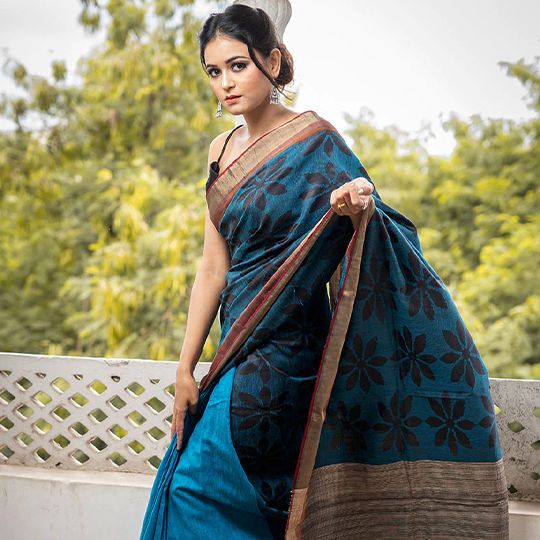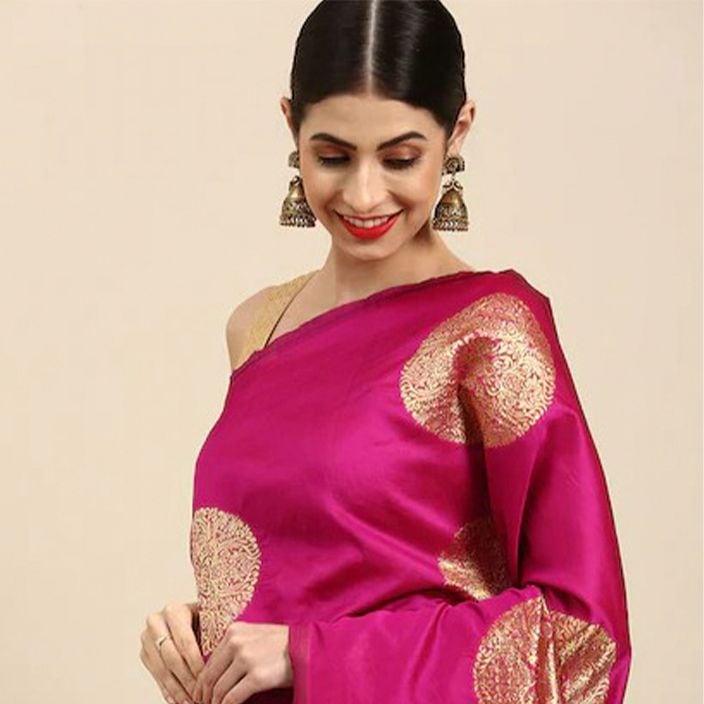For best prices and early deliveries, WhatsApp us at. 918488070070

Chhattisgarh
Located in central India and formerly a part of Madhya Pradesh, Chhattisgarh is now the ninth largest state in the country. The state has more history than what meets the eye, and much of this history is mythological in nature. The ancient name of Chhattisgarh was Dakshin Kosala (Dakshin meaning south). The significance of this name is related to “Ramayana”, as it is named after Lord Rama’s mother- Kaushalya. A very important industry that has always been a part of Chhattisgarh’s culture and economy, even after its division, is its textile industry. Especially the Baster district- the gold pot of the region’s indigenous arts and crafts. The people of Kanker, Baster and Dantewada are all essentially tribal people and pioneers of unique craftsmanship.
Traditional Clothing In Chhattisgarh
Women
The women of Chhattisgarh mainly belong to ethnic groups that have been living in the area for many generations. The most common traditional attire is a saree-like drape called “Pata”. This four-meter long yardage is conventionally white in colour with a deep red or maroon border- known as the “aal border”. The traditional pata is worn in two ways- the first one being the “ganthi marna” way, which is draped by making a knot at the back or one side of the shoulder. Here the pata is wrapped around the waist, and the loose end is tucked inside- the cloth goes over one shoulder while the other stays bare. The other way of draping is called “Chendra”. This is worn mainly by the Baster women while doing daily chores, as it is practical and makes movement easy. The way Chhattisgarh women wear the sari is known as “kachhora” style; Kachhora sarees are now widely made with batik style of dying. In the local language, the sarees are called Lugda, worn with polkha or blouse. These sarees are handwoven, and the motifs are either geometric or derived from flora and fauna.
Men
The most conventional piece of garment for the men here is the “Pichhori”- a piece of cloth worn as a lower garment by wrapping it around the waist. The pichhori is shorter in length, covering up to the knees. A dulha pichhori is a more ornamented piece worn by grooms on their wedding day.
The upper garment is a kurta, but the traditional additions to this are the chaddar and shawl. Shawls are woven out of aal dyed yarns and mostly reserved for special occasions, but both of them are very similar and worn by men around the neck for either ceremonial purposes or just to keep warm.
Another narrow piece of fabric is the angochha or, angochhi, which is used as a headband as a protection against heat. Other than that, a plain dhoti or kansbandhi is also worn by men on the bottom.
Staple Jewellery & Accessories
Accessories or jewellery are significant in the traditional dress of Chhattisgarh’s men and women; it is an integral part of their personality. Most of the pieces have tribal influence- the women wear a thin silver chain-like necklace called “suta”, whereas a necklace made of beads is called a “koundhi. “Balis” or hoops and “khuntis” are worn as earrings. Silver is also used to make waist chains called “kundhis” and arm bangles known as “kadha”. An essential piece of jewellery for married women is the “bichhiya” meaning toe ring.
What’s fascinating is that along with ornamental value, folk accessories also have practical significance. For example, the broad waist belt called “kardhan” is recommended for young mothers to avoid post-pregnancy bloating and loosening the stomach. It is important to note that ornamentation of the body is an essential part of the culture of this region.
